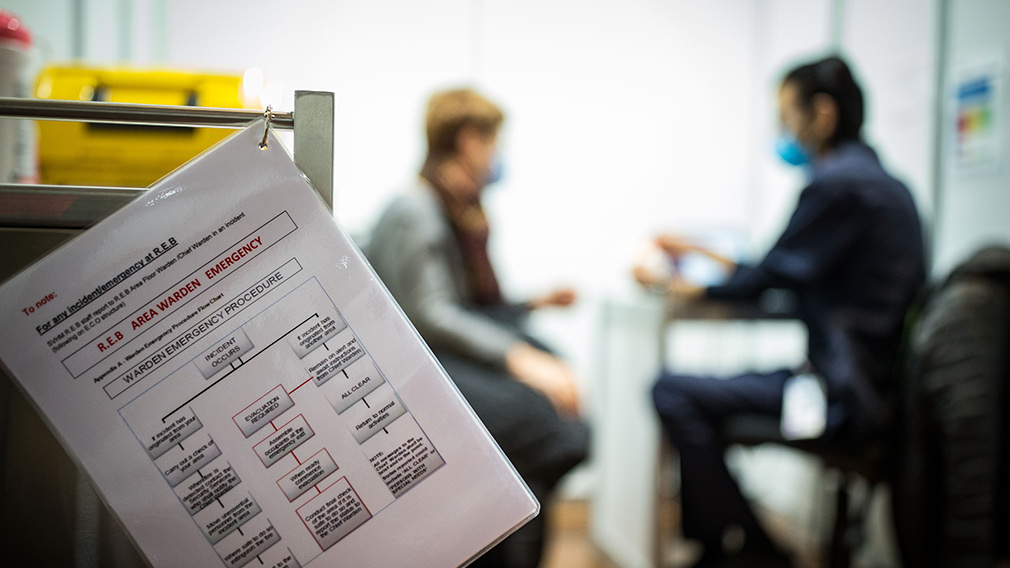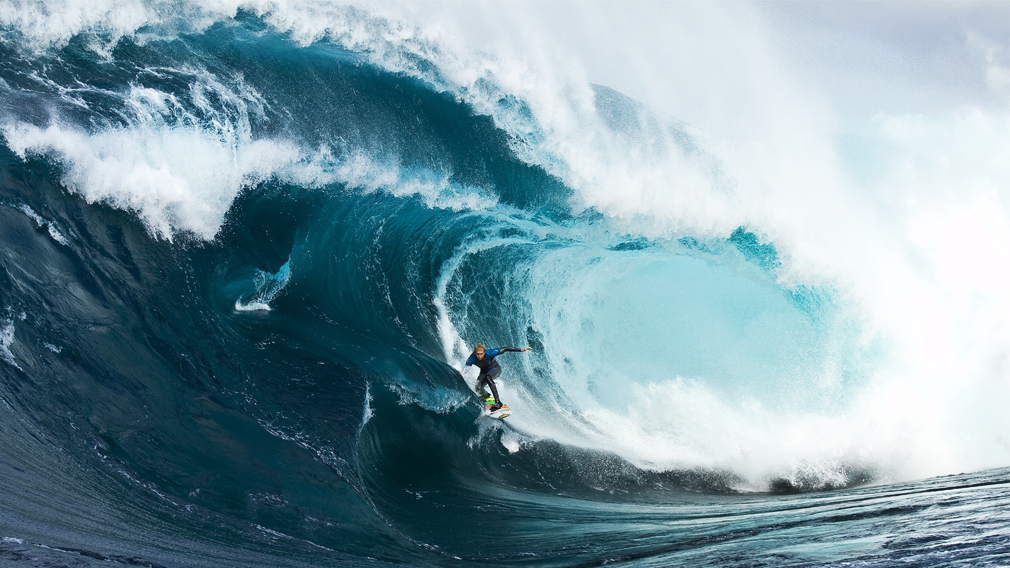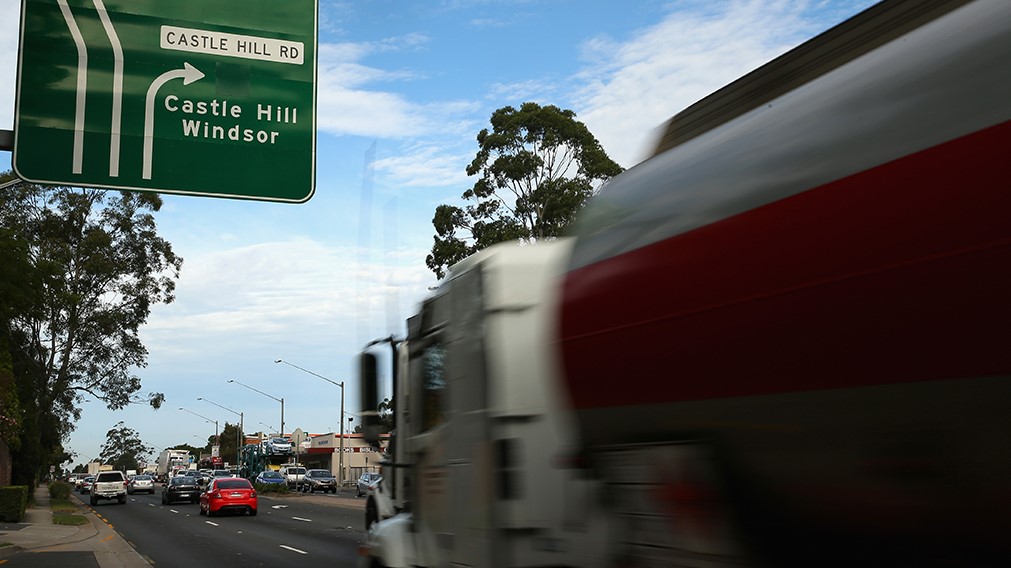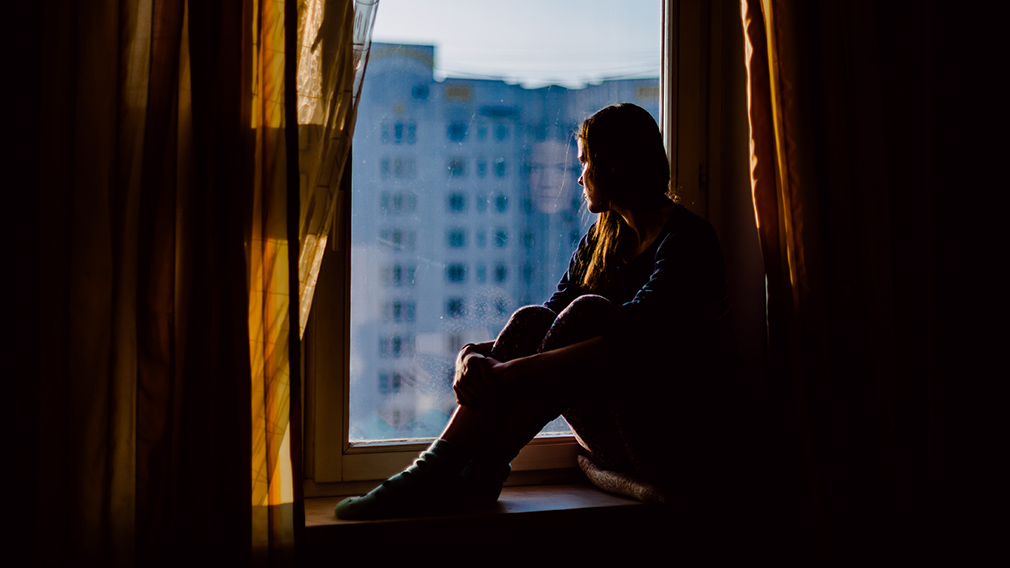Why I advised mum to get the COVID jab

A nurse explains the vaccination process at a Melbourne COVID-19 vaccination centre. (Getty)
A couple of weeks ago, I got a text message from my cousin.
The message was, 'you’d better call your mum, she doesn't want to have the COVID-19 vaccine'. That was a surprising text message to me, as you can imagine, an infectious disease physician, and with a previous role in the Australian government for COVID-19.
Like any good son, my first reaction was to pick up the phone and say, ‘mum, what the hell are you thinking?’ Which is not the right thing to do, and, fortunately, I held myself back and actually called my cousin and said, ‘what's going on?’
My mother had been talking to my aunt, and they've consented for me to share a little bit about their medical history with you.
My mother, who is in her early 70s, is someone who smoked for her whole life, and for those smokers out there, it is a very hard thing to quit. While she managed to quit about 15 years ago, mum has some emphysema and lung damage. My aunt is about 10 years older, she's had a stroke, and both of them if they were to get COVID-19, would be in serious, serious trouble.
Their risk of death would be well in excess of one in 10, and in my mother’s case her risk of needing intensive care would be one in three.
So, I called mum and said ‘when's your vaccine appointment?’ That was enough to open the conversation in a sort of non-confrontational way. She said that she had some concerns, particularly because she needs to get AstraZeneca, and she had heard a lot in the media about blood clots. So, we started to go through what those blood clots were and where they occur – in the veins of the brain and in the veins of the gut, very unusual places for blood clots to occur.
Then we started talking about risk, and risk is a difficult thing for any doctor or practitioner to be able to convey to patients and the general public. As individuals, risk is sometimes a very hard thing for us to conceptualise as well. Risk is something that we're balancing all the time, but particularly during COVID-19: the risk of vaccination side effects, the risk of getting COVID-19 etc.
So, we spoke about risk, and I was telling Mum that the risk of this very particular, peculiar and rare clotting side effect was about one in 100,000-200,000, and about one in a million of dying from it.
Then I spoke to her about what would happen if COVID-19 turned up in Sydney, and it just happened to be the day that there was a case of COVID-19 in the eastern suburbs where she lives.
I said, ‘look, if this gets out of hand …then your risk suddenly goes from very little to very, very high’.
And that's the risk balance facing many people: the risk of death from clotting of about one in one million, and the risk of intensive care admission for elderly Australians who contract COVID-19 of well in excess of one in 10.
As calculations done in the UK show, the risk of intensive care admission goes up markedly the older you get, and the risk of venous thrombosis, or clots in the brain, goes down the older that you get.
As for the age cut-off age in Australia, it ended up being around about 50 because that’s where the risk of intensive care admission and serious harm from COVID-19 starts to get very high in the 50s and above, even with a low amount of COVID-19 in the community.
Stepping back, it’s worth considering what it means to be non-immune during this pandemic.
The immune system is just a fascinatingly, scarily complex part of our bodies. Our immune cells actually first starts to develop when we're nine weeks old, and that's not nine weeks as an infant, that's nine weeks as an embryo.
That’s when we start to develop these immune cells which are now, at this very moment, protecting us from all sorts of things that our body finds foreign to us: viruses, bacteria, fungal spores in the air, things that you don't even know are going on in your body, the immune cells are moving around, and they're doing so because they have a memory of the enemy.
The bacteria or the fungus that you've been exposed to since you were very, very young, for example.
But there is one thing that the 7.8 billion people in the world have not been exposed to, and that is the COVID-19 virus. None of us at the start of this pandemic were immune. Whereas, with the influenza virus the immune system kind of sees the flu virus and says, ‘well, I know that enemy’. It's uniform might be slightly different this year, because it's mutated a little bit, or we've got a new vaccine, it's a new strain. But inherently, my immune system recognises that as the flu virus.
The COVID-19 virus is like an enemy in plain clothes.
Our immune system does not recognise it, and it does not recognise it until that enemy pulls out its weapons and starts replicating in our body.
That's the problem with being non-immune during a pandemic, and that's the problem that the immunisation, the COVID-19 vaccine, is designed to solve, because the vaccine exposes your body to something called the spike protein of COVID-19. That is the bit that, when the immune system suddenly wakes up and realises that it's infected with COVID-19, it starts to fight.
If you're not vaccinated, that moment can be too late.
Even young people can get very severe consequences from COVID-19, and if it's not too late for you, then it may be too late for someone in your family or community, for example if you have a very high viral load from COVID-19 because your immune system hasn’t shut it down quick enough and you spread it to other people.
That is one of the main reasons why we need to get vaccinated, because no one’s immune system in prior to 2020 recognised COVID-19. But now we have the means to allow our immune system to recognise it.
People obviously have many questions, so for more information, Health.gov.au is probably the most important one, because that gives you the eligibility checker and the booking link so you can make bookings for your vaccine. The National Centre for Immunisation Research and Surveillance is funded by the government and also has a lot of really important information. For those very interested in the clotting, go to the weekly safety report that our Therapeutic Goods Administration.
In addition, The Centres for Disease Control in the US has a really excellent description of messenger RNA vaccines, such as the Pfizer or Moderna vaccines, and the viral vector vaccines, ie AstraZeneca, and exactly how they work. Finally, there’s ausvaxsafety.org.au.
As the recent outbreak in Melbourne highlights, time is of the essence.
And personally, if you lined up the vaccines Australia has on offer or on order, and put a blindfold on me, I wouldn’t mind which one I picked for my first dose because I know they're all going to have the same effect in preventing severe illness and death from COVID-19.
This is an edited transcript of a recent presentation Dr Coatsworth gave at Westpac. The content of this article event is general in nature and is not personal medical advice, or specific to any individuals. Westpac and Dr Coatsworth do not represent or recommend any specific treatments or organisations. You should consult with your General Practitioner for personal advice with any questions that you have about your own circumstances.
For more information on Dr Coatsworth go to www.nickcoatsworth.com.
The views expressed are those of the author and do not necessarily reflect those of the Westpac Group.



